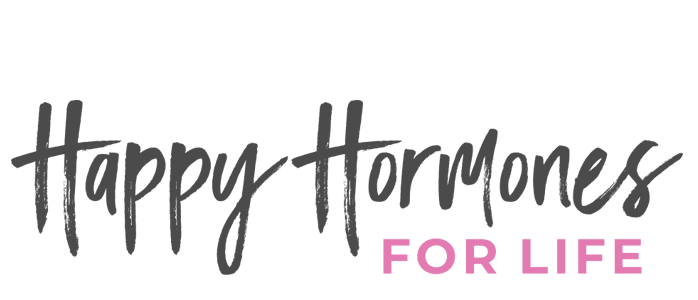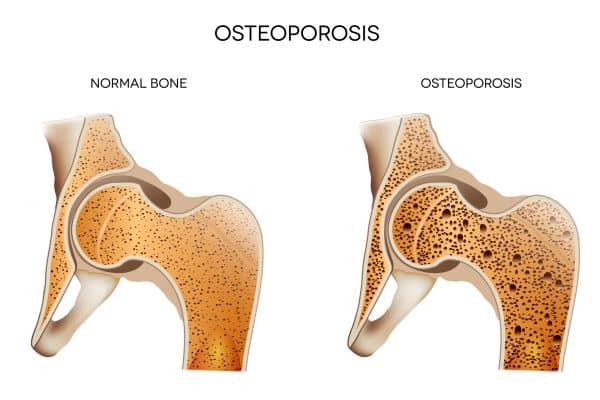The stats for osteoporosis are scary – worldwide 1 in 3 women over 50 will suffer an osteoporotic fracture (1 in 5 for men). Over 60% of fractures occur in women, usually in the hip, ankle or wrist.
One of these stats was my mum. She was in a supermarket car park ready to do her weekly shop. She opened her door and as she went to get out of the car, her foot caught in her seat belt and she fell from the car seat onto the ground. Now, she has a Mini, so it wasn't far to fall (about a foot!) but it smashed her hip into lots of pieces.
After they had operated on her, that's when they told her she had osteoporosis. There were no symptoms that alerted her, it took a nasty hip fracture to find out.
And she's not alone. In Western hospitals, hip fractures occupy more beds than any other disease, with 20% dying as a result and 50% losing their ability to live independently. Wow, that's a huge problem!
You can watch the video below or listen to the podcast
What is Osteoporosis?
Osteoporosis literally means ‘porous bones'. Your bone is living tissue, an active endocrine organ. It's constantly being built and destroyed, and as we get older it’s this balance that if it’s upset, can cause more destruction than new build, leaving your bones weak and brittle, and easily broken.
Bone health is usually measured by bone mineral density or BMD, measured by a DEXA scan – which you can get on the NHS once you hit 65. But if you’re over 50 and are at increased risk of osteoporosis, I think you should be asking for one. If you can't get one through your doctor, you can get them done privately.
Osteopenia is the first stage where BMD is lower than it should be but not low enough to be osteoporotic. Osteoporosis is where the BMD has decreased significantly and risk of fracture is high.
Risk Factors
- Menopause – the decline in oestrogen, progesterone and testosterone can cause bone destruction
- Genetics – you're more at risk if it's in the family
- Vitamin D deficiency – vital for bone health, Vitamin D deficiency is very common in the northern hemisphere during the winter
- Magnesium deficiency – insufficient magnesium in the diet is more of a factor than insufficient calcium! A study in the Journal of Nutritional Medicine in 1991 showed that after nine months, women on magnesium supplements increased bone density by 11%
- Other nutrient deficiencies, such as boron, Vitamin K2, calcium, strontium, molybdenum, manganese, phosphorus
- Lack of weight bearing exercise
- Smoking (nicotine stimulates bone destruction)
- Alcohol – studies suggest 1 drink a day might have a protective effect, while 2 or more has a negative effect
- Fizzy drinks – cola in particular has been found to block Calcium absorption. Sugar also increases inflammation.
- Caffeine – 6mg per 100mg of caffeine = 1 cup has been found to stimulate bone loss. Other studies suggest less than 2 cups does not increase risk but more than 3 does.
- Heavy animal protein diets (including dairy) seem to have a negative effect, however I wouldn't avoid meat altogether as you not be getting enough protein, so choose organic sources
- Gluten sensitivity and / or Celiac disease– gut health, malapsorption issues, plus there is some evidence of autoimmune antibodies to a protein that stops bone breakdown
- Inflammation – increases bone destruction
Natural Approaches
There are lots of ways to prevent bone loss and to support bone building, whether you are at risk or have already been diagnosed.
- Diet – an anti-inflammatory nutrient rich diet plus good quality fish oils will help reduce inflammation and provide the nutrients required for healthy bones
- Avoid gluten if you have a sensitivity to it, due to the potential link with auto-immunity and malabsorption issues
- Reduce alcohol, caffeine and cola
- Reduce dairy and processed meat, in favour of more plant foods
- Stop smoking
- Supplement with a good multivitamin and check out the Feel Bones formula for key bone supporting nutrients.
- Include a daily Vitamin D3 plus K2 supplement through the winter, and also in summer if you stay out of the sun
- Take some digestive enzymes for better absorption
- Include natural phytoestrogens such as organic soy, sage, hops, black cohosh, (food sources such as soy, flaxseeds, lentils, chick peas).
- Do regular weight bearing exercise – walking, weights, yoga, pilates.
Osteolabs At Home Test
If you think you're at risk and you can't get a Dexa scan from your doctor, there's a great new test you can do at home. Osteolabs is one of the first tests in the world to offer fractional calcium isotope determination for the diagnosis of calcium mineral balance in the skeleton and generalised osteoporosis.
Get 20% off using this link; https://happyhormonesforlife.com/osteolabs
Or talk to us about a diet and supplement plan to support your bones – the good news is that bone can always be rebuilt if you give it the raw materials!

